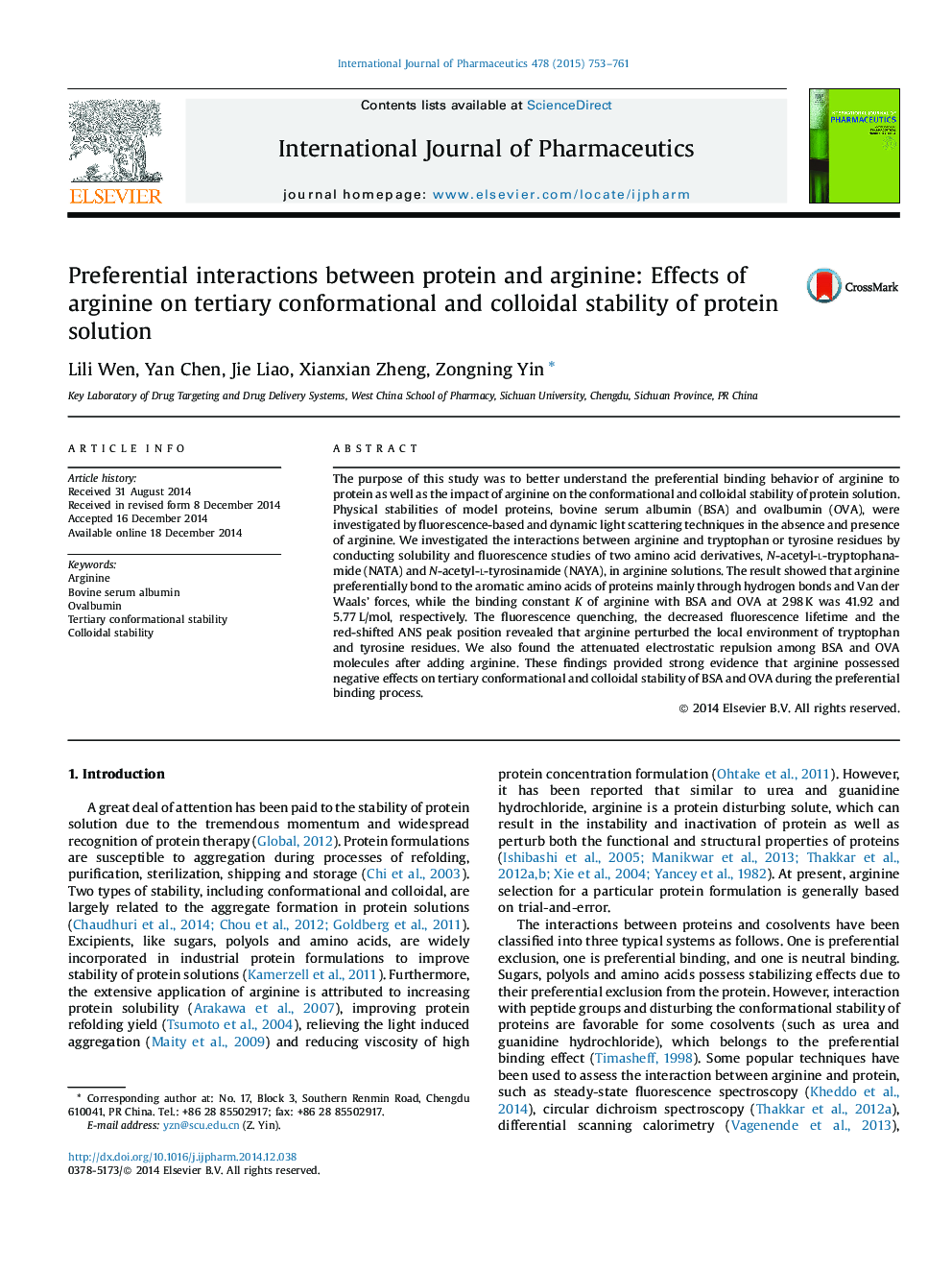| Article ID | Journal | Published Year | Pages | File Type |
|---|---|---|---|---|
| 2501760 | International Journal of Pharmaceutics | 2015 | 9 Pages |
The purpose of this study was to better understand the preferential binding behavior of arginine to protein as well as the impact of arginine on the conformational and colloidal stability of protein solution. Physical stabilities of model proteins, bovine serum albumin (BSA) and ovalbumin (OVA), were investigated by fluorescence-based and dynamic light scattering techniques in the absence and presence of arginine. We investigated the interactions between arginine and tryptophan or tyrosine residues by conducting solubility and fluorescence studies of two amino acid derivatives, N-acetyl-l-tryptophanamide (NATA) and N-acetyl-l-tyrosinamide (NAYA), in arginine solutions. The result showed that arginine preferentially bond to the aromatic amino acids of proteins mainly through hydrogen bonds and Van der Waals’ forces, while the binding constant K of arginine with BSA and OVA at 298 K was 41.92 and 5.77 L/mol, respectively. The fluorescence quenching, the decreased fluorescence lifetime and the red-shifted ANS peak position revealed that arginine perturbed the local environment of tryptophan and tyrosine residues. We also found the attenuated electrostatic repulsion among BSA and OVA molecules after adding arginine. These findings provided strong evidence that arginine possessed negative effects on tertiary conformational and colloidal stability of BSA and OVA during the preferential binding process.
Graphical abstractFigure optionsDownload full-size imageDownload high-quality image (190 K)Download as PowerPoint slide
